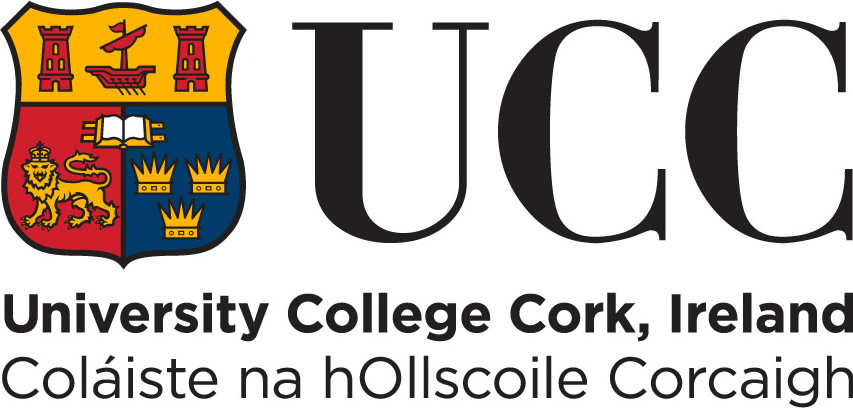Home as a Site of Resistance
Editorial
Elizabeth Patton and Anna Viola Sborgi
Figure 1: Remains of Camp Nicholls Old Soldiers Home, Moss Street by Bayou St. John, New Orleans.
Photo by Infrogmation of New Orleans. Source: Creative Commons.
The COVID-19 pandemic has changed how we view the concept of home. This shift has highlighted various societal disparities, including those based on race, gender, sexuality, and economic status. While the idea of the mediated home has been a growing topic of study (Schleier; Wojcik, Apartment Complex and Apartment Plot; Rhodes; Barnwell; Baschiera and De Rosa; Palmer; Patton; Price), this issue of Alphaville narrows its focus on the home as a space of resistance across different geographies and periods, from the 1960s to today. This issue originated from a panel for the Society of Cinema and Media Studies Annual Conference in 2023, demonstrating increasing interest in exploring the idea of home in a rapidly evolving world. The articles utilise a mix of research methods, from archival to participatory documentary. Considering debates from fields such as home movie studies, virtual reality, media activism, and the relationship between film and urbanism, the articles in this issue demonstrate how film and media can address resistance centred around the concept of home. They also challenge and offer alternative views to white, heteronormative, middle-class representations of domestic life. These articles provide insights into the challenges and importance of home for marginalised groups, suggest new ways for film and media studies to approach representation, and centre the portrayal of often-overlooked communities. Central to these articles is the idea of home and the use of media as a form of resistance and agency that can be used to contest mainstream perspectives. Each article looks at what home means, whether it is a place of safety, precarity, identity, or memory, and at how media shape or challenge our views of home and social identity.
In “‘My Cinema Is Not Diplomatic, It Is Confrontational’: Decolonial Framing of the Home in Two Documentaries by Rosine Mbakam”, Julie Le Hegarat focuses on Cameroonian female migrants in Belgium. Le Hegarat argues that filmmaker Rosine Mbakam unravels the complex tapestry of domesticity, gender, and migration and reveals how private homes are transformed into spaces for community dialogue for West Africans in Belgium. Her article demonstrates how the film narrative navigates the challenges of diaspora and cultural belonging. Mariana Liz’s “Marginality, Resilience and Escape: Home in Ana Rocha de Sousa’s Listen” examines the symbolic representation of homes in twenty-first-century Portuguese cinema by spotlighting Ana Rocha de Sousa’s poignant Listen (2020). The film depicts the struggles of a Portuguese immigrant family in the UK who confront social services over allegations of child abuse. Liz emphasises how the film challenges the concept of the home as a stable space of safety in a modern European setting defined by gender inequality, displacement, and economic disparity. Instead, Liz argues that the home operates as a space of vulnerability and resistance for a working-class family. In “Porous Privacies: Gender, Migration, and Precarious Homes in Early Twenty-First Century Narrative Films from the French Mediterranean”, Sabine Haenni dives deep into French banlieue cinema, focusing on stories of precarious migrant homes as told by female filmmakers. Haenni argues that these films represent a unique “porous privacy”, blurring the lines between private and public realms. Haenni’s article underlines the significance of a nuanced and gendered perspective in representing precarious migrant homes to resist the erasure of the inhabitants from French society and to reframe misconceptions of migrant domesticity as threatening and dysfunctional. Niyathi R. Krishna and P. Sivakumar in their article “Reproducing Home as a Space of Labour: The Great Indian Kitchen and Jaya Jaya Jaya Jaya Hai” take a close reading of the portrayal of the gendered home in two controversial Malayalam films. Their narrative analysis sheds light on gender divisions of labour, domestic violence, and the differing perceptions and experiences of home for men and women. The authors argue that these films generated national discourse on the unequal care responsibilities of women and exposed the role of prevailing patriarchal ideologies that support gender discrimination and violence, challenging the normative beliefs of viewers. Collectively, these scholars highlight the evolving relationship between gender, domesticity, and the spaces we inhabit.
In the exploration of the concept of home and its relationship with gender and domesticity three contributors consider the role of memory and historical context in shaping identity and national narratives within the domestic sphere. In “Home as Survival: Seeing Queer Archival Lives”, Jennifer Cazenave explores the work of French filmmaker Sébastien Lifshitz, who, during the 1980s, collected amateur photographs from flea markets and garage sales that portray queer couples. Cazenave demonstrates how the publication of these images in the present reframes 1960s French domestic life. Her analysis of Lifshitz’s documentaries emphasises the importance of domestic spaces and amateur archives in reimagining postwar narratives, emphasising the significance of home as a sanctuary for lives, stories, and memories outside heteronormative societal norms. Venturing into America’s past, Elizabeth Patton’s article “Home Movies as Technologies of Belonging and Resistance” considers the importance of home movies as reservoirs of Black cultural memory, especially during the tumultuous era of the Civil Rights Movement. Patton examines how home movies served as powerful tools for the African American community to foster a sense of belonging and resist systemic racism. By examining the cultural significance of American road trips and the accessibility of national parks in the postwar era, Patton argues that African Americans utilised home movies and leisure as acts of resistance to claim citizenship amid racial segregation. Drawing from cultural geography, in “‘Beyond the Kitchen Door’: Racialised Female Domestic Labourer’s Mobility Experiences in Anna Muylaert’s The Second Mother” Francianne dos Santos Velho uses The Second Mother (2015) to illustrate the limited yet resilient mobility of Brazil’s domestic female workers. Velho’s insights highlight the enduring impact of colonisation and the heritage of slavery in modern domestic middle-class spaces by drawing comparisons between the subtle yet significant power imbalances in current employer–employee relationships and the overt, oppressive dynamics that existed between owners and enslaved individuals during the era of slavery.
Conn Holohan, Anna Viola Sborgi, Jenny Gunn, and Lauren Berliner deconstruct conventional understandings of the materiality of home and the body within the context of precarious and transitional spaces. In “Precarity and Resistance: Mediating Home Across Contemporary Europe Through the Short Film Form”, Sborgi examines transnational representations of housing precarity by discussing the short film form as a space of experimentation, specifically the works of British filmmaker Ayo Akingbade and Portuguese Leonor Teles and their representations of young people facing evictions. She proposes that the filmmakers’ focus on the experiences of marginalised youth and their attempt to withstand displacement goes beyond simply depicting precarity and contribute to a new cinematic genre of “housing resistance”, exploring the intersection of housing politics and community representation. In “The Key: Abstraction, Embodiment, and Proper Distance Within the Virtual Home”, Holohan also examines precarity and housing by critically unpacking the burgeoning realm of virtual reality (VR) humanitarian filmmaking, using Celine Tricart’s 2019 animated VR experience The Key as a lens to scrutinise the effectiveness of VR in generating empathy and promoting social change. The article examines how the Tricart’s film utilises aesthetic strategies to evoke an emotional response toward the experience of loss and displacement, which encourages users to critically reflect on factors influencing housing access.
Transitioning from the virtual to the grounded reality of the pandemic, in “The Importance of a House and the Pandemic Formation of the ATLFilmParty Community” Gunn writes about the short films of the Atlanta-based Black filmmaker Olamma Oparah and the formation of the AtlFilmParty (AFP) community. Gunn examines the home as a safe haven for the Black female body, especially amidst the socio-political turmoil following George Floyd’s murder. She argues that Oparah’s films demonstrate how the AFP community created a parallel space of belonging for independent and marginalised filmmakers in Atlanta. Within the same pandemic context, Lauren Berliner explores the shifts in household media consumption during the lockdowns in “When Contexts Collapse: How Ubiquitous Video Cameras in the Home During COVID-19 Pandemic Lockdowns Transformed Family Representation”. Berliner argues that the pandemic’s shelter-at-home mandates led to an increase in children’s screen time as they gained frequent access to media recording and streaming technologies. Drawing from interviews and family video content, Berliner’s article emphasises how these newfound practices redefined family self-representation, disrupted traditional work–life boundaries, and made the necessity of domestic caregiving visible.
Together, these articles present a comprehensive and varied examination of home, resistance, and media, and remind readers of the dynamic and evolving nature of home as depicted through diverse cinematic lenses. Through various methodologies—including film studies, historical analysis, and media studies—they highlight the transformative power of the mediated home as a space for contesting societal norms. Overall, this issue enriches our understanding of home in diverse sociocultural contexts and calls for a more inclusive perspective toward the often-overlooked narratives that emerge within domestic spaces.
References
1. Barnwell, Jane. Production Design & the Cinematic Home. Palgrave Macmillan, 2022. https://doi.org/10.1007/978-3-030-90449-4.
2. Baschiera, Stefano, and Miriam De Rosa, editors. Film and Domestic Space: Architectures, Representations, Dispositif. Edinburgh UP, 2020. https://doi.org/10.1515/9781474428941.
3. The Key. Directed by Celine Tricart, Lucid Dreams Productions, 2019.
4. Muylaert, Anna, director. The Second Mother [Que Horas Ela Volta?]. Pandora Filmes, 2015.
5. Palmer, Lorrie, editor. Home Screens: Public Housing in Global Film and Television.Bloomsbury, 2023.
6. Patton, Elizabeth A. Easy Living: The Rise of the Home Office. Rutgers UP, 2020. https://doi.org/10.36019/9781978802261.
7. Price, Hollie. Picturing Home: Domestic Life and Modernity in 1940s British Film. Manchester UP, 2021.
8. Rocha de Sousa, Ana, director. Listen. Bando à Parte, Pinball London, 2020.
9. Rhodes, John David. Spectacle of Property: The House in American Film. U of Minnesota P, 2017. https://doi.org/10.5749/minnesota/9781517903695.001.0001.
10. Schleier, Merrill. Skyscraper Cinema: Architecture and Gender in American Film. U of Minnesota P, 2009.
11. Wojcik, Pamela Robertson, editor. The Apartment Complex: Urban Living and Global Screen Cultures. Duke UP, 2018. https://doi.org/10.1215/9781478002512.
12. ——. The Apartment Plot: Urban Living in American Film and Popular Culture, 1945 to 1975. Duke UP, 2010. https://doi.org/10.1215/9780822392989.
Suggested Citation
Patton, Elizabeth, and Anna Viola Sborgi. “Home as a Site of Resistance: Editorial.” Alphaville: Journal of Film and Screen Media, no. 26, 2023, pp. 1–5. DOI: https://doi.org/10.33178/alpha.26.00
Elizabeth Patton is an Associate Professor of Media and Communication Studies at the University of Maryland, Baltimore County. Her research interests centre on media history, identity, and space, and how media practices have informed popular understandings of work and leisure. She is the author of Easy Living: The Rise of the Home Office (Rutgers University Press, 2020) and the recipient of the 2023 National Endowment for the Humanities Fellowship. She currently serves as comanaging editor of Mediapolis: A Journal of Cities and Culture.
Anna Viola Sborgi is Research Fellow at the University of Leeds, UK and Visiting Fellow at the Department of Film and Screen Media, University College Cork, Ireland, where she completed a Marie Skłodowska Curie Research Fellowship: MEDIAHOMES: Housing Precarity on Screen in Ireland, Portugal and the UK from the 2008 crisis to COVID-19. Recent essays include “Precarious Homes in Britain and France: Dance, Girlhood, and Escape in Fish Tank and Divines” in Home Screens (Bloomsbury, 2023) and “Housing Problems: Britain’s Housing Crisis and Documentary” in Cinema of Crisis (Edinburgh University Press, 2020). She is editorial board member at Mediapolis, and co-chairs the Society for Cinema and Media Studies’ Urbanism/ Geography/Architecture SIG.









